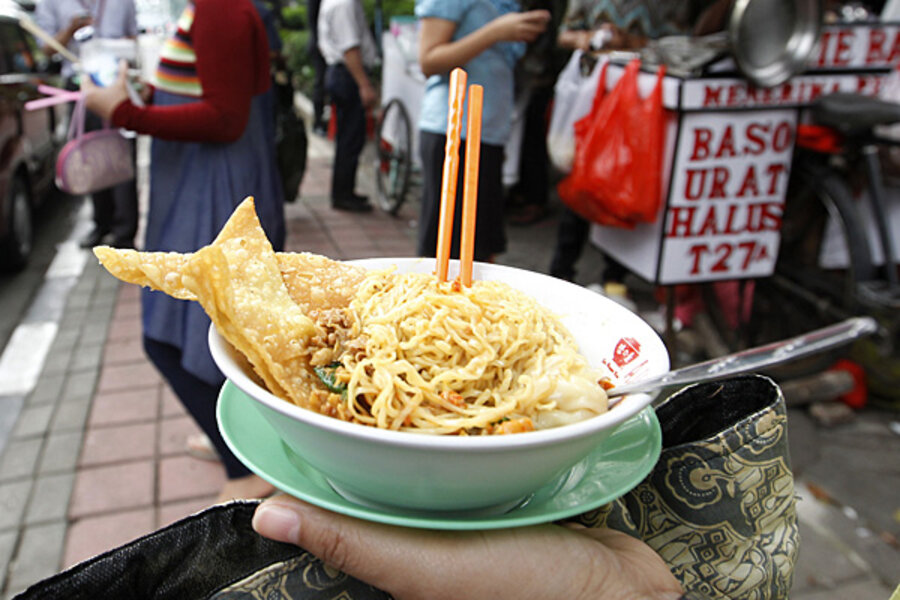Ramen burger: Is the ramen patty or bun? Explained.
Loading...
As we’ve mentioned in earlier posts, the sandwich world’s interpretation of what constitutes bread has gotten wildly liberal in recent years. We’ve had taco shells made of waffles, buns made of doughnuts and chicken breasts, and now, out of Brooklyn’s Williamsburg, comes the ramen burger, a hamburger with a bun made of ramen noodles.
How does one make ramen, seen primarily in soup form, into an acceptable sandwich holder? You’d have to ask Keizo Shimamoto, who created the ramen burger in the US and is currently selling it on Saturdays from Smorgasbord, a seasonal Brooklyn flea market. Thanks to social media and local news coverage, Mr. Shimamoto’s concoction created a stir before a single ramen bun hit the griddle. When the ramen burgers debuted at the flea market earlier this month, the line to sample one was already between 150 and 600 people deep, depending on which news outlet you ask.
“It’s like half burger, half bowl of ramen, but put into one,” Shimamoto told ABC News. “You might think that it’s crispy because I pan fry it. But when you bite into it, the inside is chewy like Ramen noodles.”
Let’s get down to ingredients. The Ramen Burger, which you can see here on its official Facebook page, consists of a beef patty sandwiched between two pan-fried discs of ramen noodles, then topped with an arugula, green onions, and a “secret” Shoyu sauce (a type of soy sauce). Shimamoto got the idea while traveling abroad in Japan, where ramen bun sandwiches are common but not with beef, which is prohibitively expensive there.
Coming hot on the heels of the Cronut (croissant + doughnut = cronut), the ramen burger is already being touted as the Big Apple’s next big food craze. And unlike many of its unconventional bread counterparts, reactions to the burger’s taste have been largely positive. Vice magazine called it “unattractive sounding but surprisingly delicious,” and model Chrissy Teigan tweeted, ”Ramen burger just happened. Completely lived up to the hype! “
No word yet on whether Shimamoto plans to take the ramen burger national, but even if he doesn’t, a sampling isn’t out of reach for the non-New Yorker. Copycat versions and online recipes, including one on the Huffington Post food section, are starting to show up.
Meanwhile, in Toronto, a reminder that even hipster food preparation should still be taken seriously: At least a dozen people were sickened with food poisoning Tuesday after eating a “cronut burger” from a food vendor at the Canadian National Exhibition, an area fair.








